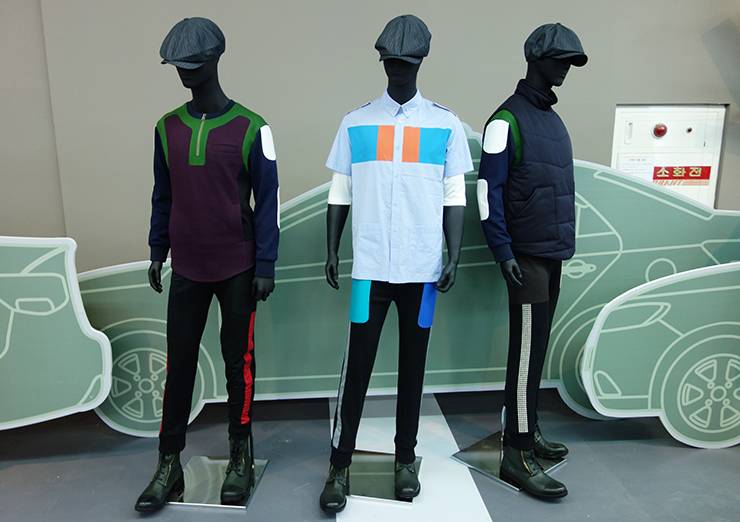INHALE is a cultural platform where artists are presented, where great projects are given credit and readers find inspiration. Think about Inhale as if it were a map: we can help you discover which are the must-see events all over the world, what is happening now in the artistic and cultural world as well as guide you through the latest designers’ products. Inhale interconnects domains that you are interested in, so that you will know all the events, places, galleries, studios that are a must-see. We have a 360 degree overview on art and culture and a passion to share.

GWANGJU — The 5th Gwangju Design Biennale opens September 6 witha lineup of 358 designers, whose works spread out over the biennale hall’s multi-storey galleries. Out of the largely Asian-designer focused curatorial direction — with a few European icons like Deyan Sudjic — there are a few stand-out examples of local design.
A breathtaking recreation of Chang Eung-bok’s “Boutique Hotel” in “Design From Tradition” is one of Biennale’s best displays of modern Korean design, but was first seen at Seoul Museum of Art’s NamSeoul branch. Of the original work created for the biennale, BLOUIN ARTINFO Korea selects the top five designs.
1. Woven Simplicity
Architect Kim Paik Sun’s large-scale installations of traditional Korean items envisioned as contemporary sculpture are both the introduction and the heart of the biennale. Taking from Lee O Young’s “The Natural History of Korean Culture,” the concept of “Old and New” brings to the forefront the beauty of a long-lost aesthetic. Designed in Kim’s signature palette of natural tones, fans form an aerodynamic wing and woven baskets transform into curvaceous corridors.
2. Driving in Style
Five of the country’s top fashion designers were pulled together to create a stylish new uniform for Gwangju’s taxi drivers. While Korea’s driving elite are already known for their (largely) polished looks and occasional accompanying white gloves, the designs Chang Kwang-Hyo ofCaruso were our favorite. Chang’s modernist take, which combines military detail with sporty color blocking, can easily be imagined on an amiable cabbie. However, the final design is up to the public, and the winning look will be manufactured and distributed by the city of Gwangju.
3. Light Enveloped
Park Jai Woo’s nostalgic lanterns made of hanji paper and bamboo slivers are editorial light fixtures. “Kite” takes from the shape of old Korean kites, while the delicately folded lines of “Lantern 2013” create an origami effect. The latter is paired with a pulley-based dimmer, for practical design hidden in the polish. The soft lighting textured with the fibers of the hanji is simultaneously a statement piece and homage to Korea past.
4. Bamboo Bend
On first glance, it’s unclear whether or not Kengo Kuma’s walkable bamboo structure can actually support the weight of a human. But, of course, the Japanese designer’s ingenuity becomes clear with the first step. Though seemingly fragile, the flexibility of the rotated half-pipe can be seen in wind-blown kinetics of the upper reeds and the soft bend of the pieces underfoot. Just don’t cross in heels.
5. Diversity in Denim
“The Doors of Perception” curated by fashion designers Gene Kei and Hanii Y presents a collection of 13 denim looks that pay tribute to the textile’s meaning-imbued past and incarnations as the fabric of the blue-collar worker, youth generation, and then the antiwar movement. Jung Ji Eun’s miner-inspired jumpsuit is a close second to Park Yi Seul’s structured-sleeve cape.
via blouinartinfo.com































































